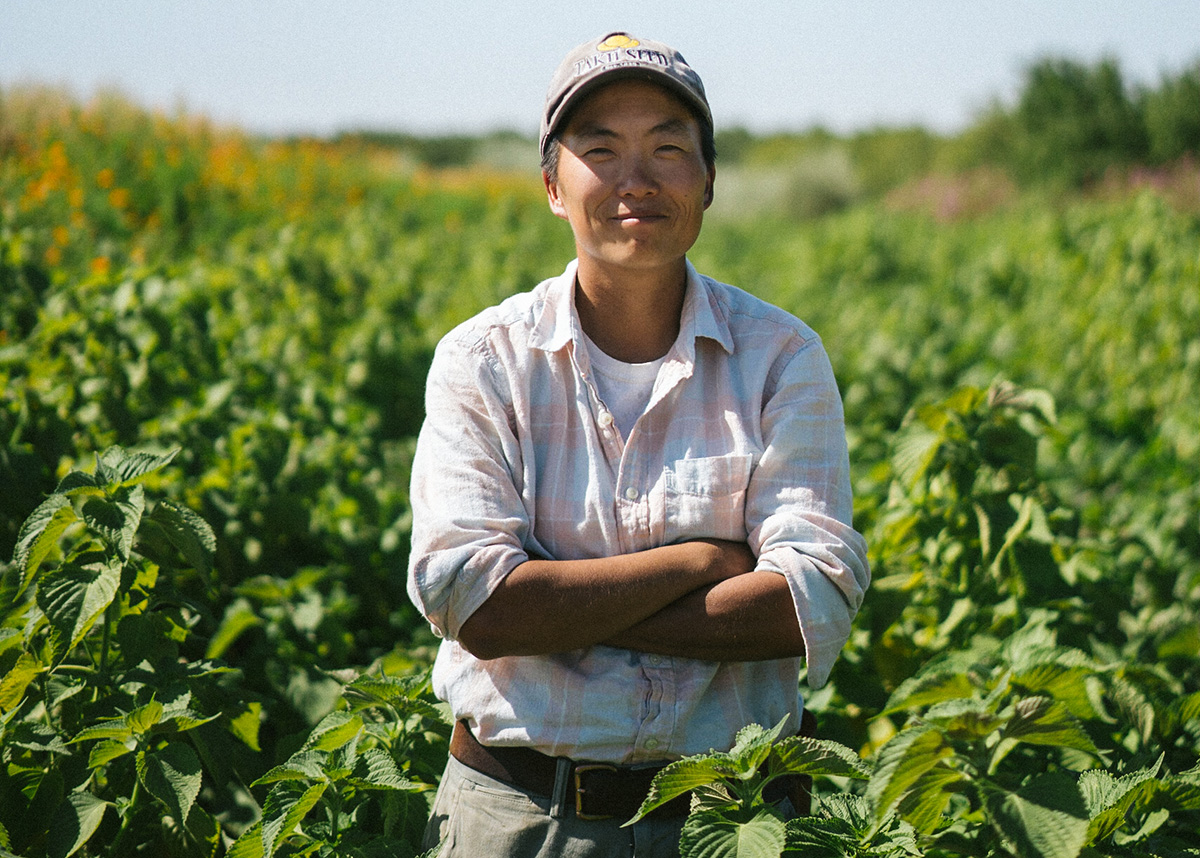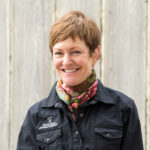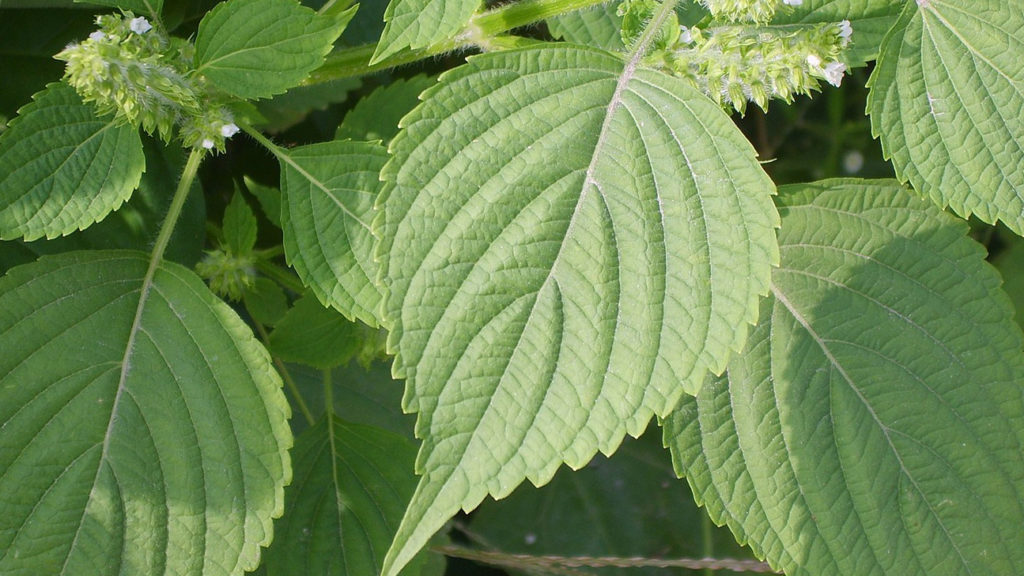Kristyn Leach of Namu Farm

By: Kathy Webster and Isabelle Jackson Nunes
TomKat Ranch’s Fork to Farm initiative aims to shift people’s mindset and purchasing power toward regeneratively grown food, ultimately putting more dollars into the hands of farmers and ranchers who produce healthy food and support healthy soils. At TomKat Ranch, we believe that in the effort to foster a truly regenerative food system, every person has a role to play—farmers, eaters, chefs, seed collectors, and so many more. Working together from the first seed to the last bite, we can grow, serve, and eat food that is good for people and the planet.

 There are so many interesting and hopeful ways to engage in this crucial work. One inspiring example is Kristyn Leach of Namu Farm who we first met at EcoFarm Conference’s Regenerative Field Days. Fueled by a desire to produce honest, ethical food that empowers communities, Kristyn grows a variety of vegetables and herbs that capture and share the essence of Korean cuisine and culture. And by utilizing organic, regenerative practices such as no-till and cover crop rotations, Kristyn supports thriving communities of life above and below ground.
There are so many interesting and hopeful ways to engage in this crucial work. One inspiring example is Kristyn Leach of Namu Farm who we first met at EcoFarm Conference’s Regenerative Field Days. Fueled by a desire to produce honest, ethical food that empowers communities, Kristyn grows a variety of vegetables and herbs that capture and share the essence of Korean cuisine and culture. And by utilizing organic, regenerative practices such as no-till and cover crop rotations, Kristyn supports thriving communities of life above and below ground.
Namu Farm was founded in partnership with the owners of Namu Gaji, a San Francisco-based restaurant. The relationship began with a cold call and a crate of perilla with Namu restaurant chef, Dennis Lee. Soon after, Chef Lee and his brother helped Kristyn secure a 10-year lease on 3 acres of land in Winters, California. As a result of these efforts, beautiful, hand grown vegetables and Asian herbs go directly from Namu farm to the Namu tables.
“My favorite time of year is perilla season, and so I make sure to preserve as many of these fragrant leaves as possible to tide me over during the winter. Collect leaves in peak summer, but before plants begin to flower.”
– Kristyn Leach

Perilla leaves are often found in Korean cooking and provide a distinct flavor between basil and mint. Photo credit: Dalgial
Kristyn embodies a regenerative approach to farming focused on building ecological resilience, producing nutrient-dense foods, and strengthening peoples’ relationship to land and place. Kristyn grows fruits, vegetables, and herbs using no-till practices and beneficial cover crops. Her approach to farming provides nutrients to the soil, interrupts weed, insect, and disease cycles, and has eliminated the need for costly and harmful fertilizers and pesticides.
Kristyn is also a passionate seed saver. Founder of Second Generation Seeds, a collective of Asian American growers devoted to helping communities of the Asian diaspora discover and deepen their cultural heritage through seeds, Kristyn and others are seeking to reclaim the narrative around Asian crops and foodways. This practice has made her operation, and many others, more resilient; by saving seeds from plants that have adapted to harsh conditions (drought, disease, pests), future crops will be better adapted and more resilient.
“You can tell where a person came from by what they plant.”
– Kristyn Leach
From seed to stomach, Kristyn is intimately engaged with the food grown at Namu Farm. Kristyn applies various fermentation and pickling techniques to farm fresh vegetables to not only enhance flavor and texture, but also for the health benefits associated with the processes. Both techniques preserve foods through the seasons and differ in time, temperature, and acid. Fermentation is a longer term process (18-24 days) that utilizes naturally present bacteria and yeast to produce lactic acid at room temperature. Pickling takes less time, introducing an acid-based (usually vinegar) hot or cold brine to various foods, mainly vegetables and fruits.
Fermented or pickled foods, such as kimchi and pickles, produce beneficial probiotic bacteria that diversify gut flora (microorganisms in the human gut). In this way, the foods Kristyn grows in fertile, healthy soils also contribute to a thriving environment in our own gut microbiome—the community of microorganisms, such as fungi and bacteria, that exists both in our bodies and the soil our food is grown in.
Whether you are new to pickling or an avid pickler, check out the recipe below for Kristyn’s favorite dish, Kkaennip Jangajji (Perilla soy pickle). Happy pickling!
Kristyn’s favorite dish: Kkaennip Jangajji (Perilla soy pickle)
~50 leaves, rinsed and dried (pick in the morning before plants conserve their energy at the peak of the day)
To make the brine:
- 1.5 c Guk Ganjang (Korean soup soy sauce)
- 1 c Water
- 1/2 c Persimmon vinegar (I use this for tang and sweetness and to replace the sugar used in many recipes)
- Sliced garlic
- Green onions
- Sliced fresh Korean red chili
To make the dish:
- Combine brine ingredients except for vinegar and bring to a simmer
- Add vinegar and take off heat
- Pour over leaves, cool and refrigerate
Can be eaten as soon as a few hours after marinating. But they will keep for months in the fridge. Just make sure the leaves are properly submerged in liquid.